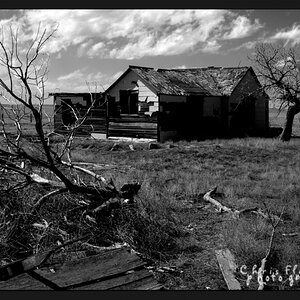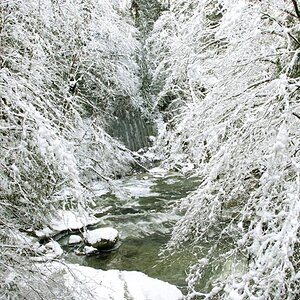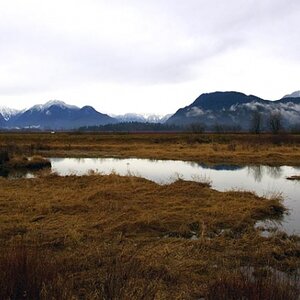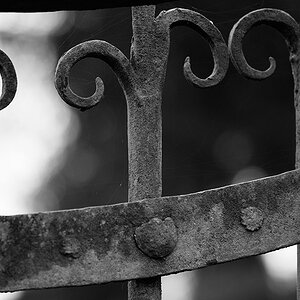Navigation
Install the app
How to install the app on iOS
Follow along with the video below to see how to install our site as a web app on your home screen.

Note: This feature currently requires accessing the site using the built-in Safari browser.
More options
You are using an out of date browser. It may not display this or other websites correctly.
You should upgrade or use an alternative browser.
You should upgrade or use an alternative browser.
Is It Just Me?!
- Thread starter snerd
- Start date
Derrel
Mr. Rain Cloud
- Joined
- Jul 23, 2009
- Messages
- 48,225
- Reaction score
- 18,941
- Location
- USA
- Website
- www.pbase.com
- Can others edit my Photos
- Photos OK to edit
Nikkors have always had decade-appropriate styling, and looked pretty good for their era of production. The lenses I thought were always hideous were the East German "zebra" lenses.
East German zebra lenses - Google Search
You wanna' talk ugly lenses? Now THOSE were ugly lenses!
East German zebra lenses - Google Search
You wanna' talk ugly lenses? Now THOSE were ugly lenses!
- Joined
- Jun 14, 2013
- Messages
- 4,030
- Reaction score
- 1,482
- Location
- Oklahoma
- Website
- internetwhispers.com
- Can others edit my Photos
- Photos NOT OK to edit
Good grief!! You ain't nevah lyin'!!!Nikkors have always had decade-appropriate styling, and looked pretty good for their era of production. The lenses I thought were always hideous were the East German "zebra" lenses.
East German zebra lenses - Google Search
You wanna' talk ugly lenses? Now THOSE were ugly lenses!

TheLost
No longer a newbie, moving up!
- Joined
- May 17, 2012
- Messages
- 1,230
- Reaction score
- 337
- Can others edit my Photos
- Photos NOT OK to edit
At least Nikon knows how to design a lens...
Canon has to paint their lenses white to reflect heat so they don't get too hot. The Fluorite lens elements Canon uses are affected by heat and it will degrade quality.
Nikon's own advertising even makes fun of it..
"While the optical properties of this new glass closely resemble those of fluorite, Super ED glass is more resilient to rapid temperature changes (thermal shock) and not as susceptible to cracking as the crystal structure of fluorite. Super ED glass also boasts a higher refractive index than fluorite, making it highly capable of correcting aberrations other than chromatic aberration"
Ever wonder why NASA uses Nikon?
Canon has to paint their lenses white to reflect heat so they don't get too hot. The Fluorite lens elements Canon uses are affected by heat and it will degrade quality.
Nikon's own advertising even makes fun of it..
"While the optical properties of this new glass closely resemble those of fluorite, Super ED glass is more resilient to rapid temperature changes (thermal shock) and not as susceptible to cracking as the crystal structure of fluorite. Super ED glass also boasts a higher refractive index than fluorite, making it highly capable of correcting aberrations other than chromatic aberration"
Ever wonder why NASA uses Nikon?

D-B-J
Been spending a lot of time on here!
- Joined
- Apr 13, 2010
- Messages
- 9,027
- Reaction score
- 2,175
- Can others edit my Photos
- Photos OK to edit
At least Nikon knows how to design a lens...
Canon has to paint their lenses white to reflect heat so they don't get too hot. The Fluorite lens elements Canon uses are affected by heat and it will degrade quality.
Nikon's own advertising even makes fun of it..
"While the optical properties of this new glass closely resemble those of fluorite, Super ED glass is more resilient to rapid temperature changes (thermal shock) and not as susceptible to cracking as the crystal structure of fluorite. Super ED glass also boasts a higher refractive index than fluorite, making it highly capable of correcting aberrations other than chromatic aberration"
Ever wonder why NASA uses Nikon?
Is this legit?
waday
Do one thing every day that scares you
- Joined
- Jul 21, 2014
- Messages
- 7,485
- Reaction score
- 3,599
- Can others edit my Photos
- Photos NOT OK to edit
At least Nikon knows how to design a lens...
Canon has to paint their lenses white to reflect heat so they don't get too hot. The Fluorite lens elements Canon uses are affected by heat and it will degrade quality.
Nikon's own advertising even makes fun of it..
"While the optical properties of this new glass closely resemble those of fluorite, Super ED glass is more resilient to rapid temperature changes (thermal shock) and not as susceptible to cracking as the crystal structure of fluorite. Super ED glass also boasts a higher refractive index than fluorite, making it highly capable of correcting aberrations other than chromatic aberration"
Ever wonder why NASA uses Nikon?
Didn't NASA crash a $125 million spacecraft due to Metric vs. English units?
waday
Do one thing every day that scares you
- Joined
- Jul 21, 2014
- Messages
- 7,485
- Reaction score
- 3,599
- Can others edit my Photos
- Photos NOT OK to edit
From Canon Professional Network - Black or White LensesAt least Nikon knows how to design a lens...
Canon has to paint their lenses white to reflect heat so they don't get too hot. The Fluorite lens elements Canon uses are affected by heat and it will degrade quality.
Nikon's own advertising even makes fun of it..
"While the optical properties of this new glass closely resemble those of fluorite, Super ED glass is more resilient to rapid temperature changes (thermal shock) and not as susceptible to cracking as the crystal structure of fluorite. Super ED glass also boasts a higher refractive index than fluorite, making it highly capable of correcting aberrations other than chromatic aberration"
Ever wonder why NASA uses Nikon?
Is this legit?
Lenses contain glass elements. These expand with heat. This is not usually a problem with compact lenses − the amount of expansion is small. But large lenses contain large elements and here expansion can bring a lens close to the limits of its design tolerances. A white surface reflects sunlight, helping to keep the lens cooler.
TheLost
No longer a newbie, moving up!
- Joined
- May 17, 2012
- Messages
- 1,230
- Reaction score
- 337
- Can others edit my Photos
- Photos NOT OK to edit
Is this legit?
Maybe... but its a blast to tell all white lens carrying people along sidelines "Hey.. make sure you keep that thing out of the sun!"
It was probably more true in the old days... however, its still referenced on Wikipedia.
Canon L lens - Wikipedia, the free encyclopediaLarger sized L-lenses, such as the 70–200 mm and 100–400 mm zooms and longer focal length primes (300 mm+), usually have an off-white barrel (sometimes referred to as the color "putty") to reduce heat absorption under the sun that may otherwise affect the performance of the lens
Derrel
Mr. Rain Cloud
- Joined
- Jul 23, 2009
- Messages
- 48,225
- Reaction score
- 18,941
- Location
- USA
- Website
- www.pbase.com
- Can others edit my Photos
- Photos OK to edit
The white lenses stay cooler in the sun is a line of BS is untrue. The Canon white lens strategy was a marketing trick, developed back in the era when Canon was trying desperately to be accepted as a professional camera gear maker. As longtime Leica writer Erwin Puts wrote,
"In 1989 Leica expanded the range of cameras with compact cameras ‘loaned’ from Minolta and later Panasonic. The idea was that the company needed to broaden the consumer base and thus to generate more money.
With this strategy Leica followed in the footsteps of Nikon, the company that started as a premium manufacturer of professional photographic equipment and expanded its range with equipment for the amateur snap-shooter (that was the name of that species of photographers). Nikon was obviously more successful and the answer to the why requires a different article.
Canon on the other hand followed the opposite road. It cemented a strong consumer base with excellent quality equipment for the advanced amateur that was also cheap enough for the beginning or aspiring professional. Who does not remember the classic FT range? After being a household name in photography, Canon embarked on a high-end professional range, the redoubtable F1 camera."
Product strategy at Leica | The TAO of Leica
It was back in the era of the F1 and F1-n that Canon decided it needed a way to VISUALLY make their equipment stand out at major sporting events, with a WHITE paintjob on its big glass lenses. After a few years, the white lenses gradually started showing up. They are ostentatious. They "stand out in a crowd", such as at a stadium. The distinctive white paint on big lens barrels was Canon's way of differentiating itself, and it worked. The white as heat deflector line is utter rubbish. The US military has tested many paint finishes, and as far as heat deflection, white paint offers little advantage over any other color. Like so much utter crap, Wikipedia perpetuates old folk tales in many,many areas. It's surprising that people do not even understand "historical" truth that's only 40 years old, and instead re-spew garbage. But then, anybody can edit a Wikipedia entry.
"In 1989 Leica expanded the range of cameras with compact cameras ‘loaned’ from Minolta and later Panasonic. The idea was that the company needed to broaden the consumer base and thus to generate more money.
With this strategy Leica followed in the footsteps of Nikon, the company that started as a premium manufacturer of professional photographic equipment and expanded its range with equipment for the amateur snap-shooter (that was the name of that species of photographers). Nikon was obviously more successful and the answer to the why requires a different article.
Canon on the other hand followed the opposite road. It cemented a strong consumer base with excellent quality equipment for the advanced amateur that was also cheap enough for the beginning or aspiring professional. Who does not remember the classic FT range? After being a household name in photography, Canon embarked on a high-end professional range, the redoubtable F1 camera."
Product strategy at Leica | The TAO of Leica
It was back in the era of the F1 and F1-n that Canon decided it needed a way to VISUALLY make their equipment stand out at major sporting events, with a WHITE paintjob on its big glass lenses. After a few years, the white lenses gradually started showing up. They are ostentatious. They "stand out in a crowd", such as at a stadium. The distinctive white paint on big lens barrels was Canon's way of differentiating itself, and it worked. The white as heat deflector line is utter rubbish. The US military has tested many paint finishes, and as far as heat deflection, white paint offers little advantage over any other color. Like so much utter crap, Wikipedia perpetuates old folk tales in many,many areas. It's surprising that people do not even understand "historical" truth that's only 40 years old, and instead re-spew garbage. But then, anybody can edit a Wikipedia entry.
TheLost
No longer a newbie, moving up!
- Joined
- May 17, 2012
- Messages
- 1,230
- Reaction score
- 337
- Can others edit my Photos
- Photos NOT OK to edit
The white as heat deflector line is utter rubbish. The US military has tested many paint finishes, and as far as heat deflection, white paint offers little advantage over any other color. Like so much utter crap, Wikipedia perpetuates old folk tales in many,many areas. It's surprising that people do not even understand "historical" truth that's only 40 years old, and instead re-spew garbage. But then, anybody can edit a Wikipedia entry.
Then somebody needs to tell Canon... Because Wikipedia is almost word for word what Canon says on their site.
Canon Professional Network - Black or White Lenses <-- Canon link
Derrel
Mr. Rain Cloud
- Joined
- Jul 23, 2009
- Messages
- 48,225
- Reaction score
- 18,941
- Location
- USA
- Website
- www.pbase.com
- Can others edit my Photos
- Photos OK to edit
Yeah. B.S. has a life of its own. People need to exercise a bit of common sense. If white was necessary, then ALL of the larger Canon L lenses would be white, but the 135 f/2 L and 200/2.8 L are BLACK, and always have been. People need to do a bit of thinking here as well; is sunlight the only way to collect heat? God no, no it is not: ambient air temperatures will eventually allow all lenses to reach the same, exact maximum heat. Again, the US military has done extensive testing on painted finishes. The simple science is that paint coloration does NOT prevent metal or glass items from gaining heat from sunlight. MASSIVE, $40,000 to $100,000 cinema lenses, like the huge Fuji zoom shown here last week ( Fujinon 25-300 mm T3.5 to 3.85 Cabrio Premier PL Lens ZK12X25 are almost ALL solid black. Same with ALL of Canon's cinema lenses...every single one of those are BLACK. If white offered a significant, real advantage, then all lens makers would make their lenses with a white or "putty" enamel painted finish, the way Canon does. Buuuuut....they do not. Sigma's monster 200-500mm f/2.8...is GREEN... Again, marketing B.S. is seldom truthful.
In normal air temperatures, from 25 degrees Farenheit to about 100 degree Farenheit, paint color has basically no real, significant impact on sunlight, and almost ZERO influence on ambient air temperature, either heating, or cooling. If white were TRULY better, ALL of the lens makers would make everything white.
Marketing is almost always BS. Look at what the cigarette companies said for years. Look at what car companies say about their products. Marketing is designed to sway public opinion. The way I read it is Canon's big lenses have a tough time handling sunlight...
In normal air temperatures, from 25 degrees Farenheit to about 100 degree Farenheit, paint color has basically no real, significant impact on sunlight, and almost ZERO influence on ambient air temperature, either heating, or cooling. If white were TRULY better, ALL of the lens makers would make everything white.
Marketing is almost always BS. Look at what the cigarette companies said for years. Look at what car companies say about their products. Marketing is designed to sway public opinion. The way I read it is Canon's big lenses have a tough time handling sunlight...
Last edited:
Derrel
Mr. Rain Cloud
- Joined
- Jul 23, 2009
- Messages
- 48,225
- Reaction score
- 18,941
- Location
- USA
- Website
- www.pbase.com
- Can others edit my Photos
- Photos OK to edit
Canon Claims 'World's Longest' Ultra-zoom 4K Cinema Lens | Digital Trends
It is $78,000, capable of handling Super35mm format 4k cinema use...and it is BLACK.
Canon EF Cinema Prime Lens Kit (14, 24, 35, 50, 85, 135mm) B&H
ALL of these are...BLACK....
Huh....
Sony's $20,900, six-lens cinema lens kit offers a 20mm, a 25mm, a 35mm, a 50mm, an 85mm, and a 135mm...and all of them are...BLACK.Sony CineAlta 4K Six Lens Kit (PL Mount) SCL-PK6/F B&H Photo
Schneider's Cine-Xenar III series are...all BLACK! Huh....
https://www.schneideroptics.com/ecommerce/CatalogSubCategoryDisplay.aspx?CID=1842
For a little over $101,000, Leica will sell you a set of six Summicron-C cinema lenses, and all of them are...black. Leica Summicron-C T2.0 Lens Set (6 Lenses) LEI-SUMC-SET-CS B&H
Some of the world's most-exacting lenses, designed for highly demanding uses, and all of them are solid...black in finish....huh...
What does not add up here? Is it that professional cinematographers are not swayed by marketing B.S., the way amateurs are? I think so. The lens is a tool, not a "look at me! look at me!" advertisement vehicle.
It is $78,000, capable of handling Super35mm format 4k cinema use...and it is BLACK.
Canon EF Cinema Prime Lens Kit (14, 24, 35, 50, 85, 135mm) B&H
ALL of these are...BLACK....
Huh....
Sony's $20,900, six-lens cinema lens kit offers a 20mm, a 25mm, a 35mm, a 50mm, an 85mm, and a 135mm...and all of them are...BLACK.Sony CineAlta 4K Six Lens Kit (PL Mount) SCL-PK6/F B&H Photo
Schneider's Cine-Xenar III series are...all BLACK! Huh....
https://www.schneideroptics.com/ecommerce/CatalogSubCategoryDisplay.aspx?CID=1842
For a little over $101,000, Leica will sell you a set of six Summicron-C cinema lenses, and all of them are...black. Leica Summicron-C T2.0 Lens Set (6 Lenses) LEI-SUMC-SET-CS B&H
Some of the world's most-exacting lenses, designed for highly demanding uses, and all of them are solid...black in finish....huh...
What does not add up here? Is it that professional cinematographers are not swayed by marketing B.S., the way amateurs are? I think so. The lens is a tool, not a "look at me! look at me!" advertisement vehicle.
Last edited:
minicoop1985
Been spending a lot of time on here!
- Joined
- Sep 3, 2013
- Messages
- 5,520
- Reaction score
- 1,865
- Location
- Appleton, WI
- Can others edit my Photos
- Photos OK to edit
I thought that in order to look ultra pro, I need a few white lenses. I keep getting mistaken for an amateur with my black camera with black lens.


JimMcClain
No longer a newbie, moving up!
- Joined
- May 25, 2014
- Messages
- 616
- Reaction score
- 420
- Location
- Feather River Country
- Website
- 1footinthegrave.com
- Can others edit my Photos
- Photos OK to edit
The Zeiss Otus 85mm f/1.4 Apo Planar T is one handsome lens, if you ask me.
http://nikonrumors.com/wp-content/u...-f1.4-Apo-Planar-T-lens-for-Nikon-F-mount.jpg
http://nikonrumors.com/wp-content/u...-f1.4-Apo-Planar-T-lens-for-Nikon-F-mount.jpg
Similar threads
- Replies
- 0
- Views
- 191
- Replies
- 3
- Views
- 372
- Replies
- 6
- Views
- 525
- Replies
- 3
- Views
- 134






![[No title]](/data/xfmg/thumbnail/37/37620-c3155da657d8b81637b9050d879694f5.jpg?1619738152)
![[No title]](/data/xfmg/thumbnail/37/37622-530e264cdd98e6648079b89d7d3cd356.jpg?1619738153)




